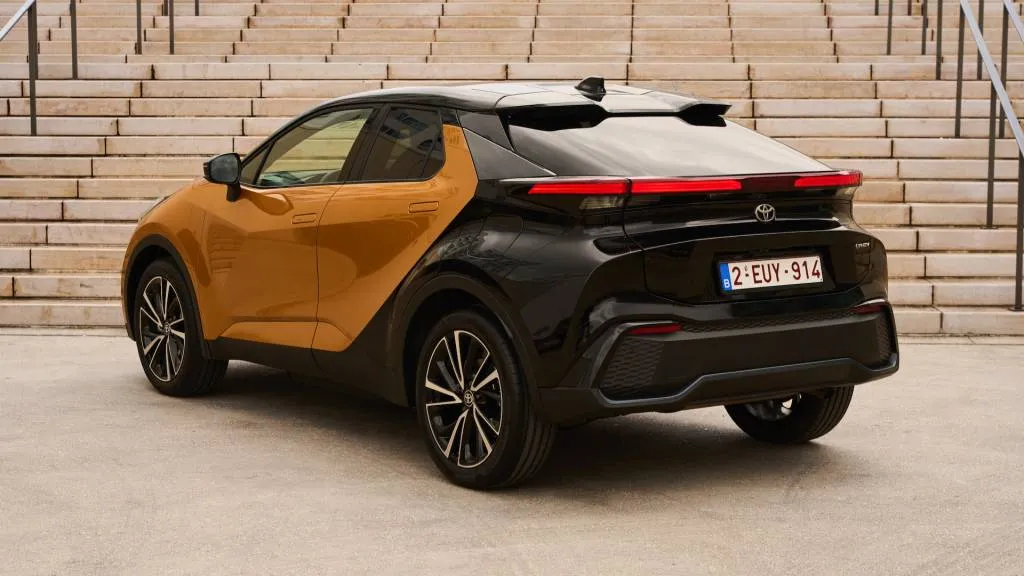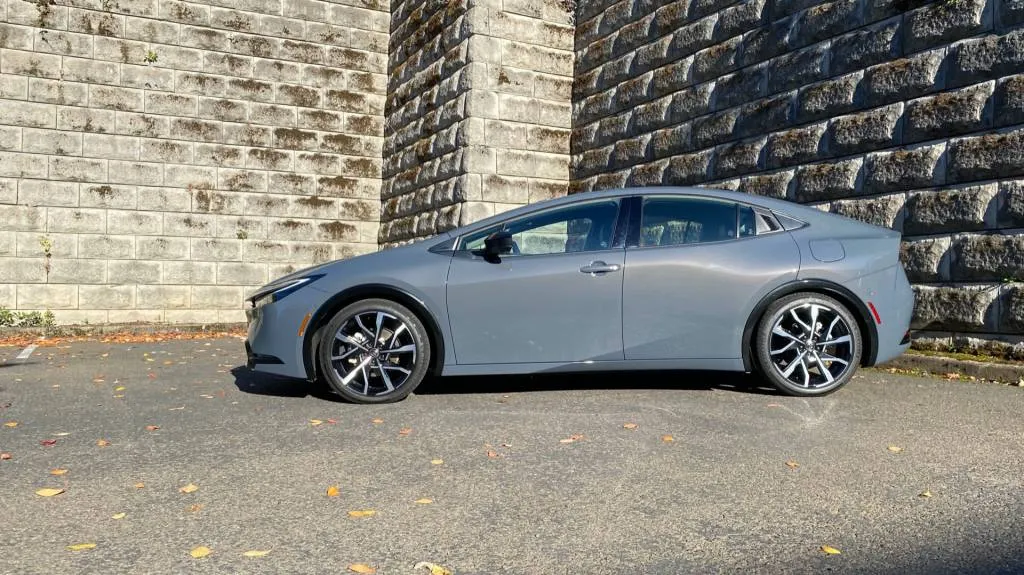Will Toyota Prius Prime gain EV route planning smarts?

Among the new features of the Toyota C-HR plug-in hybrid recently launched in Europe is an efficiency-boosting trip planner that could be useful to Toyota’s U.S. plug-in hybrid customers.
Called Predictive Efficient Drive, this feature analyzes traffic conditions and learns the driver’s behavior and regular routes to maximize use of electric mode, according to a Toyota press release on the C-HR plug-in hybrid.
In that Toyota PHEV, a geofencing function also automatically activates electric mode in urban low-emission zones, as part of a trip-planning function that saves electric operation for those route portions.

2024 Toyota C-HR plug-in hybrid (European-spec)
Predictive Efficient Drive is a system that Toyota also touts for the Prius Prime. But as City Dwellers found out in follow-ups with Toyota in the U.S., the Prius Prime’s version of this system is a bit different.
For one, it doesn’t include the geofencing feature to identify the densest urban areas that might best be electric-only. And in the U.S., the system doesn’t draw from crowdsourced information or a deeper layer of map data, other than live traffic data.
Instead, the car itself is gaining route-specific information about your driving. That learning is “kept local on the vehicle and is not shared outside the car or stored on the cloud,” according to Toyota. And while some efficiency-based systems—such as those from Audi—draw from terrain data embedded in maps, Toyota’s Predictive Efficient Drive is primarily studying the drive force and road load.

2024 Toyota Prius Prime
The takeaway, based on this, is that while the feature as it’s offered to America in the Prius Prime might not help you be more efficient on a road trip, it will help “learn” where it should prioritize electric driving on your daily commute, or on another trip that you do regularly. And that should help minimize the amount of gasoline you use.
Prius Prime gets smart on EV use for the commute, not new destinations
The U.S. Prius Prime already includes an EV Auto mode that prioritizes EV mode depending on driving conditions; but it doesn’t “see” the overarching route plan and what’s ahead. A more comprehensive trip-planning feature might be a good fit for the U.S.-market Prius Prime. Toyota also rolled this feature to Europe starting last year in the Lexus NX plug-in hybrid. The Prius Prime’s relatively slow 3.5-kw onboard charger wouldn’t make sense for mid-trip charging stops, but for future PHEVs with quicker charging or even DC fast-charging, such a feature might add even more carbon-averting functionality.
“As Toyota’s HEV and PHEV lineup evolves, so, too, shall the supporting technologies behind their management,” noted Toyota to City Dwellers, in what sounds to be a strong hint that such smarter urban-EV features may be on the way.
The C-HR plug-in hybrid’s powertrain consists of a 2.0-liter inline-4 gasoline engine and electric motor, which combined generate 220 hp. A 13.6-kwh lithium-ion battery pack—the same size as that used in the Prius Prime—gives the C-HR 41 miles of range, as measured on the European WLTP testing cycle. That compares to as many as EPA-rated miles for the Prius Prime in the U.S., and it makes sense as a contrast as Toyota notes the C-HR is tuned for sportier driving.
The Toyota C-HR isn’t sold in the U.S., although Toyota has also shown a compact EV for Europe that might be U.S.-bound.
Lexus in Europe continues to use the confusing “self-charging hybrid” for its non-plug-in hybrids, despite a previous crackdown by Norway’s consumer agency, which saw it as misleading. In the U.S. Toyota has also tried some of this creating marketing, recasting its hybrids without charge ports last year as “hybrid EVs.”
So the decisions Toyota makes in this technology integration could potentially speak volumes to how the company intends to pitch its plug-in hybrids for America in the near future.
—
with reporting from Stephen Edelstein